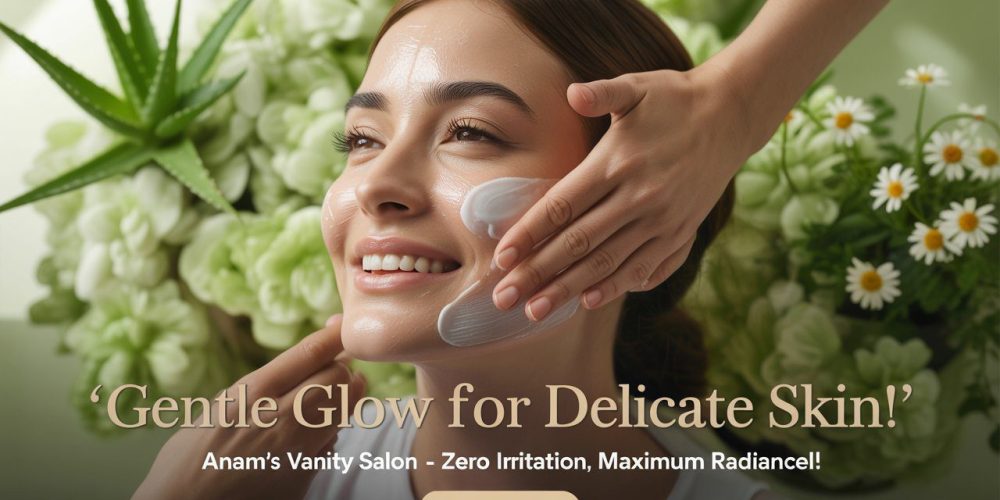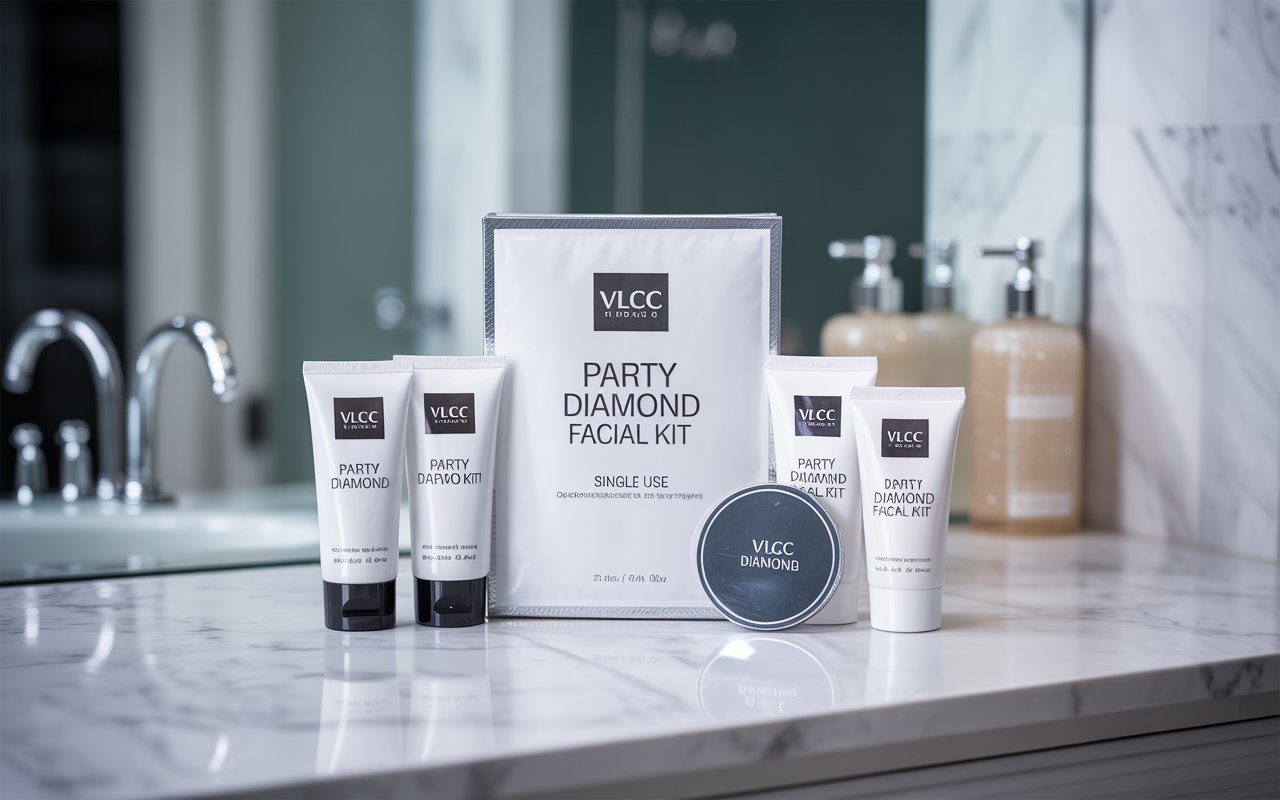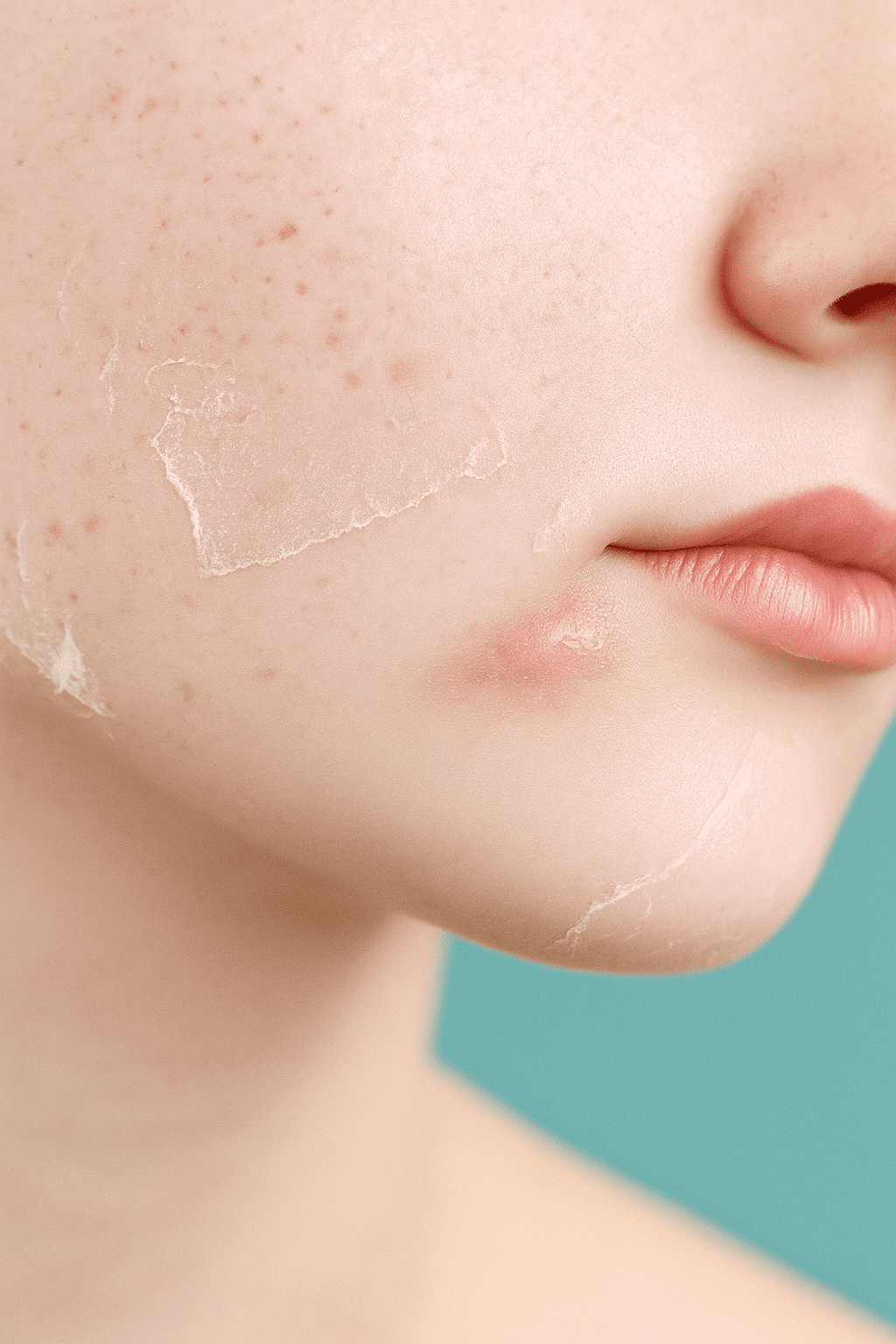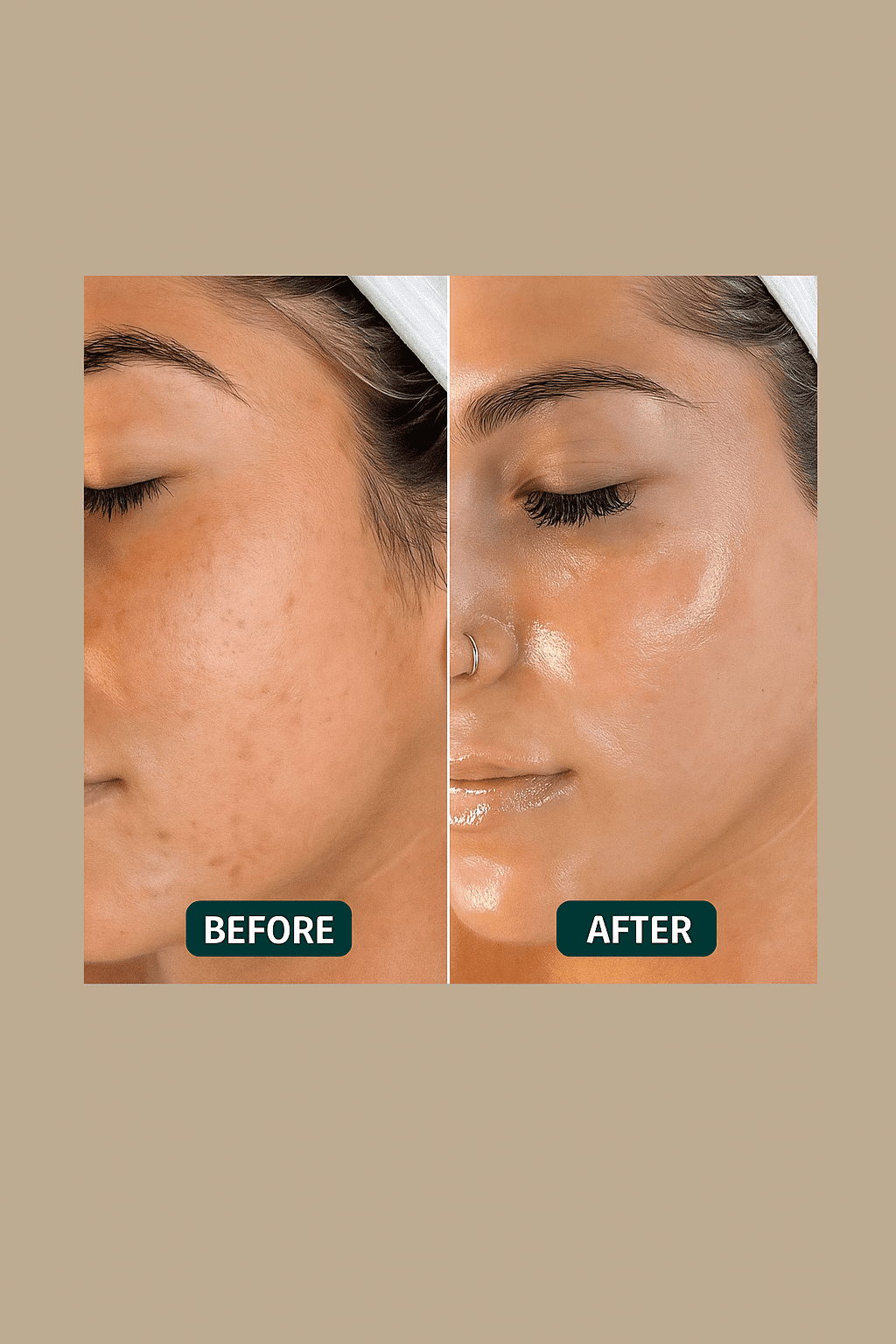Does your skin turn red, sting, or feel tight after trying a new skincare product? You are not alone. For those of us with sensitive skin, a simple facial can feel like a major risk. While others enjoy glowing skin, we often deal with the worry of a bad reaction.
The good news is that achieving a calm, soothed, and radiant complexion is entirely possible. The secret lies in finding the right treatment designed specifically for delicate complexions.
This guide will help you discover the best facial for sensitive skin that delivers results without the backlash.
Understanding Sensitive Skin
Sensitive skin is a common condition where your skin reacts more easily to things it doesn’t like. Think of it as your skin having a lower tolerance for irritation. It’s not a medical disease on its own, but rather a sign that your skin’s protective barrier might be weakened.
What Makes Skin “Sensitive”
Your skin has a natural protective barrier. This barrier helps keep moisture in and irritants out. When this barrier is weak or damaged, it can’t do its job properly. This allows irritants to get in and moisture to get out more easily, leading to the reactions we call “sensitive skin.”
Common Signs of Sensitive Skin
How do you know if you have sensitive skin? Look for these common signs:
- Redness: Your skin may look flushed or have red patches.
- Tightness: Your skin can feel tight, especially after washing it.
- Quick Irritation: Your skin reacts quickly to products, turning red, itchy, or stinging.
- Dryness and Flaking: A weakened barrier loses moisture, leading to dry, flaky patches.
- A Feeling of Burning or Stinging: This can happen when you apply certain products.
Everyday Triggers for Sensitive Skin
Many everyday things can cause a reaction. Knowing your triggers is the first step to managing your skin. Common triggers include:
- Weather: Extreme hot or cold temperatures, wind, and sun exposure.
- Stress: Emotional stress can often lead to skin flare-ups.
- Strong Products: Those with alcohol, fragrance, harsh acids, or rough scrubs.
- Hard Water: Water with a high mineral content can be drying.
- Certain Fabrics: Rough materials like wool can rub and irritate the skin.
Care for Your Sensitive Skin for Better Comfort
Caring for sensitive skin is about being gentle and consistent. The golden rule is: less is more.
Actionable Tip: Always patch test a new product before putting it all over your face. Apply a small amount behind your ear or on your inner arm and wait 24 hours to see if you have a reaction.
- Cleanse Gently: Use a mild, fragrance-free cleanser. Avoid hot water and harsh scrubbing.
- Moisturize Regularly: A good moisturizer helps strengthen your skin’s barrier. Look for ingredients like ceramides and hyaluronic acid.
- Use Sunscreen Daily: The sun is a major irritant. Use a mineral sunscreen with zinc oxide or titanium dioxide, as they are gentler on sensitive skin.
- Read Labels: Avoid products with alcohol, synthetic fragrance, and essential oils, as these are common irritants.
Pros and Cons
|
Solution |
Pros |
Cons |
|
Fragrance-Free Products |
It can sometimes leave a white cast on the skin. |
May still contain other potential irritants. |
|
Mineral Sunscreen |
Less likely to sting or cause redness. Effective immediately. |
Can sometimes leave a white cast on the skin. |
|
Seeing a Dermatologist |
Get expert advice tailored specifically to you. |
Greatly reduces the chance of irritation. Widely available. |
- Understanding Sensitive Skin
- How Harsh Ingredients Can Damage Your Skin?
- Choose a Facial for Calming Sensitive Skin
- Key Steps to a Calming Routine
- Redness Reducing Techniques
- Care for Your Skin After a Spa
- What to Avoid for Healthy Skin After a Spa
- How to Spot a Bad Peel for Your Skin
- faqs:
How Harsh Ingredients Can Damage Your Skin?
Think of your skin’s barrier as a protective wall. It keeps the good moisture in and the bad irritants out. Some facial ingredients are too strong and can break down this wall.
- Strong acids: Ingredients like glycolic acid are great for exfoliation, but if they are too strong or left on too long, they can cause redness and a burning feeling.
- Astringents: These ingredients strip away your skin’s natural oils. This can leave your skin feeling tight, dry, and vulnerable.
- Fragrances and alcohol: These are common irritants that can cause immediate redness and itching for many people.
When your skin barrier is damaged, your skin becomes sensitive, dry, and can even break out more as it tries to protect itself.
Why Over-Exfoliation Leads to Redness
Exfoliation, or removing dead skin cells, is a key part of many facials. But there is such a thing as too much of a good thing.
- Physical scrubs: If an esthetician scrubs too hard with grainy products or tools, it causes tiny tears in the skin. This is basically micro-damage that leads to inflammation.
- Chemical exfoliants: Using multiple strong chemical exfoliants (like a peel followed by an acid toner) in one session can overwhelm your skin.
- Too much friction: Even the rubbing motion during cleansing or extractions can irritate skin that is already sensitive.
The result is often raw, stinging skin that feels sore to the touch instead of smooth.
Pros and Cons of Strong Facials
|
Pros (The Good) |
Cons (The Bad) |
|
Can provide dramatic, quick results |
It can severely compromise your skin barrier |
|
Feels very deep-cleaning |
Leads to redness, peeling, and burning |
|
May be marketed for “transformative” change |
High risk of causing a negative reaction |
Emotional Impact of Post-Facial Skin Reactions
A bad reaction to a facial is more than just physical. It can be emotionally upsetting.
You went in hoping to treat yourself and improve your skin, and you left with a face that looks and feels worse. This can be frustrating, embarrassing, and can really hurt your confidence. It’s important to remember that it’s usually not your fault; it’s often a case of the treatment being too aggressive for your unique skin type.
How to Have a Safe and Soothing Facial Experience
The goal is to get the benefits without the pain. Here’s how to protect your skin:
- Do a patch test first: Always ask an esthetician to test a new product on a small area of your skin, such as your jawline, before applying it to your entire face.
- Discuss your skin history: Be honest about your skin care routine. Tell them if you have rosacea, eczema, or if your skin is currently feeling sensitive. The number one rule is to communicate openly with your esthetician.
- Choose gentle options: Opt for facials labeled “calming,” “hydrating,” or “for sensitive skin.” These focus on nourishing your skin barrier rather than stripping it.
- Listen to your skin: If something stings or burns intensely during the facial, speak up immediately. Then visit your dermatologist and check your skin. A slight tingle might be normal, but real pain is not.
MAKEUP | HAIR | SPA
📞 +923246322468
🗓 By Appointments
Choose a Facial for Calming Sensitive Skin
If your skin feels irritated, looks red, or is easily upset, a gentle facial can be a wonderful solution. The right treatment will soothe your skin, not stress it. The key is to pick treatments that focus on hydration and calming, not harsh scrubbing or strong chemicals.
Here are some of the best options to look for.
Hydrafacial for Deep Hydration Without Irritation
A Hydrafacial is a fantastic choice for sensitive skin. It works like a vacuum to gently clean out your pores and then puts moisturizing serums back in. It does not use harsh grains or acids that can cause peeling.
Instead, it gives your skin a big drink of water, which helps to plump it up and reduce the look of fine lines. You get deep cleaning without any redness or downtime.
Bela MD Facial for Gentle Cleansing and Calming
The Bela MD facial is designed to be very gentle. It uses special serums that are made to calm inflammation and reduce redness.
Think of it as a soothing treatment that washes away impurities without rubbing your skin the wrong way. It’s perfect for when your skin is feeling reactive and you need a moment of pure relaxation.
Glo₂Facial Detox to Boost Oxygen
This facial uses a gentle mist of oxygen to help your skin heal. It can be very calming for redness and can give your skin a bright, healthy glow. The oxygen helps to kill bacteria that can cause breakouts without using harsh products. It’s a light, refreshing treatment that leaves skin feeling balanced and soothed.
Consider Treatments Like Microneedling or IPL
Treatments like Microneedling or IPL (Intense Pulsed Light) are more powerful. They can help with problems like scars or broken blood vessels. However, you should only get these if a dermatologist or experienced esthetician says it is safe for your sensitive skin. These treatments can sometimes cause flare-ups if not done correctly.
Quick Comparison:
|
Skin Concern |
Best Treatment |
Avoid |
|
Dryness |
Collagen facials |
Strong exfoliants |
|
Redness |
Cold therapy |
Steam treatments |
|
Acne |
LED light therapy |
Harsh peels |
|
Eczema |
Enzyme peels |
Fragranced products |
Key Steps to a Calming Routine
This method focuses on three simple steps. You do not need to do them all at once. Start slowly and see what works for you.
- Hydration: This means adding water to your skin. Think of a sponge; when it is wet, it is soft and flexible. Your skin acts the same way. Use a simple hyaluronic acid serum on damp skin to lock in moisture.
- Cooling Masks: Using a gentle, calming mask once or twice a week can reduce redness fast. Look for masks with ingredients like aloe vera, centella asiatica, or oatmeal. For an extra cooling effect, keep the mask in the refrigerator before you use it.
- Barrier Repair: Your skin has a natural protective shield. When this shield is weak, irritants get in and cause problems. Use a moisturizer with ceramides, fatty acids, or cholesterol to help repair this shield and protect your skin.
Best Results:
This method is not for everyone, but some people see a huge difference. You will benefit the most if you have:
- Sensitive skin that reacts to new products.
- Rosacea or constant facial redness.
- Skin that feels dry and tight even after moisturizing.
- Reactive skin that flushes easily from heat, stress, or spices.
Pros and Cons
It is helpful to know what to expect when you start this journey.
|
Pros (The Good Things) |
Cons (The Things to Consider) |
|
Reduces redness and makes skin look even. |
Requires patience; results are not instant. |
|
Strengthens your skin over time. |
Means you might need to stop using strong active ingredients for a while. |
|
Simple and often affordable; fewer products are needed. |
Can feel “boring” if you enjoy trying new products |
Best Ingredients for Calming Reactive Skin
These gentle, natural ingredients help soothe sensitive skin:
- Aloe Vera – Reduces inflammation and hydrates.
- Chamomile – Calms redness and irritation.
- Oatmeal – Forms a protective barrier and relieves itching.
- Cucumber Extract – Cools and refreshes the skin.
- Hyaluronic Acid – Adds moisture without irritation.
Redness Reducing Techniques
If your skin is prone to redness, try these gentle techniques:
✔ Cold Mask – A chilled gel mask helps constrict blood vessels and reduce flushing.
✔ LED Light Therapy (Red Light) – Reduces inflammation and promotes healing.
✔ Facial Massage with Jojoba Oil – Improves circulation without tugging the skin.
Why You Must Do a Patch Test First
Before any new treatment, always do a patch test. This is the most important step to avoid a bad reaction.
A patch test means applying a small amount of a new product to your skin, usually behind your ear or on your inner arm. Wait for 24 hours to see if your skin gets red, itchy, or swollen. This simple test can save you from a full-face allergic reaction or irritation. Any good esthetician will insist on doing this for you.
Talking to Your Esthetician About Your Skin History
Your esthetician is a skin expert, but they are not a mind-reader. For the best and safest results, you need to have an open conversation.
Be sure to tell them about:
- Any past allergic reactions to products.
- If you have sensitive skin or conditions like rosacea.
- All the medications and supplements you are taking.
- Any recent procedures, like laser or microdermabrasion.
The more they know, the better they can tailor your facial to your needs.
Matching a Facial to Your Skin
|
If Your Skin Is… |
Look For These Facials… |
And Avoid These… |
|
Dry or Dehydrated |
Hydrating, moisturizing, or facial with hyaluronic acid. These add moisture back into your skin. |
Deep cleansing or acne facials, which can be too drying. |
|
Oily or Acne-Prone |
Deep cleansing, salicylic acid, or clarifying facials. These help control oil and clear pores. |
Hydrating, moisturizing, or a facial with hyaluronic acid. These add moisture back into your skin. |
|
Sensitive or Rosacea-Prone |
Heavy, oil-based treatments can clog your pores. |
Care for Your Skin After a Spa
Think of your skin after a spa like a beautiful, freshly watered garden. You wouldn’t immediately start pulling at the plants, right? You let it settle and absorb the nutrients. Your skin needs the same peaceful time to heal and show its best results.
Best Products to Use on Skin
For the next 48 hours, your motto should be “keep it simple and gentle.” Your main goal is to hydrate and protect your skin without irritating it.
- Use a Gentle Cleanser: Wash your face with a soft, non-foaming cleanser. This will clean your skin without stripping away its natural oils.
- Apply a Fragrance-Free Moisturizer: Your skin might feel drier as it releases toxins and heals. A simple moisturizer with no added perfume will help soothe and hydrate it.
- Always Wear a Light SPF: This is the most important step! Your skin can be more sensitive to the sun. Apply a light, mineral-based sunscreen every morning to protect your new skin cells.
What to Avoid for Healthy Skin After a Spa
It’s tempting to keep up with your usual routine, but some products can do more harm than good right now.
- Skip scrubs and exfoliants. Your skin is already smooth from the treatment. Scrubbing it can cause redness and irritation.
- Avoid acids and strong treatments. Put away products with ingredients like glycolic acid, salicylic acid, or retinol for a few days. They can be too harsh on your sensitive skin.
- Don’t use heavy makeup. Try to let your skin breathe. If you must wear makeup, choose light, mineral-based products.
Pros and Cons
It’s helpful to know why we choose a gentle routine after a spa. This table breaks it down simply.
|
If You Do This (Gentle Care) |
If You Do This (Harsh Care) |
|
✅ Sooner, visible results |
❌ Redness and irritation |
|
✅ Long-lasting glow |
❌ Dryness and flakiness |
|
✅ Skin feels calm and soothed |
❌ Breakouts from irritation |
|
✅ Protects your spa investment |
❌ Wastes the money you spent |
Simple Steps for a Soothing Skin Routine
Your daily routine should be easy. Follow these steps for the best outcome:
- Morning: Splash your face with cool water or use a gentle cleanser. Pat dry. Apply your fragrance-free moisturizer. Finish with your light SPF.
- Evening: Gently cleanse your face to remove dirt and sunscreen. Apply a little extra moisturizer to help your skin recover overnight.
- Drink plenty of water. Hydrating from the inside out is the best way to help your skin heal and maintain that fresh glow.
How to Spot a Bad Peel for Your Skin
Getting a chemical peel can be a fantastic way to refresh your skin. But not all peels are safe. Knowing what to avoid can save you from pain, damage, and a lot of regret. Let’s break down the major red flags.
Strong Fragrances in Products
Your face is sensitive. Peel solutions are designed to work on a deep level. Added perfumes and strong fragrances are unnecessary irritants.
They can cause allergic reactions, redness, and inflammation. This is the last thing you want on skin that’s already being treated.
- What to do instead: Always choose fragrance-free products. Look for labels that say “for sensitive skin” or “unscented.”
Alcohol-Heavy Solutions
Some products use alcohol to help them dry quickly. However, high amounts of alcohol are extremely drying and harsh. They strip your skin of its natural, protective oils. This can lead to a tight feeling, major irritation, and can even disrupt your skin’s barrier.
- What to do instead: Ask your esthetician or dermatologist about the ingredients. Opt for peels that use other, gentler methods to deliver active ingredients.
Rough Physical Exfoliants
A chemical peel is the exfoliation. You should never combine it with rough, gritty scrubs. Using a scrub before or right after a peel is like scrubbing sunburned skin. It causes micro-tears and can lead to severe irritation, scarring, and a much longer healing process.
- What to do instead: After a peel, let your skin shed naturally. Your provider will give you aftercare instructions, which will always include being very gentle with your skin.
Untrained Providers or Cheap Deals
This is the biggest red flag. A chemical peel is a medical-grade treatment. You should never get one from someone without proper training and credentials.
- Avoid: Spas or people who cannot prove their certifications.
- Avoid: “Trendy” peels offered in non-medical settings (like home parties).
- Avoid: Amazingly cheap deals that seem too good to be true. They usually are.
An untrained provider might not know how to choose the right peel for your skin type. This can lead to burns, blisters, scarring, and permanent skin damage.
- What to do instead: Always see a licensed esthetician or a dermatologist. They have the knowledge to assess your skin and choose the safest, most effective treatment for you.
Quick Guide: Safe Peel vs. Risky Peel
|
Safe Choice ✅ |
Risky Choice ❌ |
|
Performed by a dermatologist or licensed esthetician |
Done by an untrained or uncertified person |
|
Uses medical-grade, fragrance-free products |
Uses products with strong perfume or alcohol |
|
Includes a consultation to check your skin type |
No consultation; a one-size-fits-all approach |
|
Comes with clear, written aftercare instructions |
Little to no advice on how to care for the skin after |
faqs:
What is the best facial treatment for sensitive skin?
A hydrating or calming facial is best. These avoid harsh exfoliants and steam, using instead soothing ingredients like colloidal oatmeal, aloe vera, and ceramides to strengthen your skin’s barrier without causing irritation.
Are hydrafacials safe for rosacea?
Yes, but with caution. Inform your esthetician about your rosacea. They will avoid the strongest suction settings and use calming serums. Studies show gentle hydrafacials can improve hydration and redness without triggering flares when performed correctly.
What calms skin irritation fast after a spa treatment?
Apply a cold compress or a cloth soaked in cold milk for 5-10 minutes. The fat and proteins are very soothing. Then, use a fragrance-free moisturizer with ceramides or aloe to hydrate and repair the skin barrier immediately.
Can I get a facial if my skin is currently irritated?
No, you should postpone. Facials on already irritated skin can make things much worse. Wait until your skin is completely calm and recovered before booking any treatment to avoid further sensitivity or damage.
How often should I get a facial for reactive skin?
Every 6-8 weeks is a safe start. This gives your skin a full cycle to recover between treatments. Overdoing it can compromise your skin barrier. Always listen to your skin and your esthetician’s advice.
What ingredients should I avoid with sensitive skin?
Avoid fragrance (natural or synthetic), alcohol, harsh physical scrubs, and high concentrations of acids (like glycolic acid). These are common triggers that can strip your skin and lead to redness and stinging sensations.
Is niacinamide good for sensitive skin?
Yes, but choose a low concentration (around 5%). Research from the Journal of Clinical and Aesthetic Dermatology shows it effectively reduces redness and improves the skin barrier. High concentrations can sometimes cause flushing.
Is vitamin C good for sensitive skin?
It can be. Look for stable forms like Magnesium Ascorbyl Phosphate or Tetrahexydecyl Ascorbate. These are less acidic than L-Ascorbic Acid and are much less likely to cause tingling or irritation for reactive skin types.
Which moisturizer is best for sensitive skin?
Dermatologists recommend fragrance-free moisturizers with simple formulas containing ceramides, hyaluronic acid, and glycerin. These ingredients hydrate and repair the skin’s protective barrier without using potential irritants.
What are common triggers for sudden skin sensitivity?
Stress, hormonal changes, extreme weather, and harsh new products can trigger sudden sensitivity. Even over-washing or using water that is too hot can strip your skin’s natural oils, leading to burning and redness.
Conclusion –
You do not need aggressive products for beautiful skin. Calm, hydrating facials bring great results without fear.
By choosing simple routines with gentle products and mindful professional treatments, you protect your skin’s health for the long term. This gentle path is the true secret to a lasting, healthy glow.





